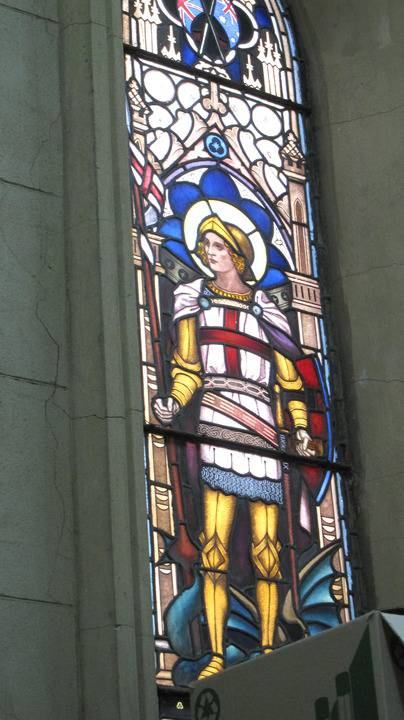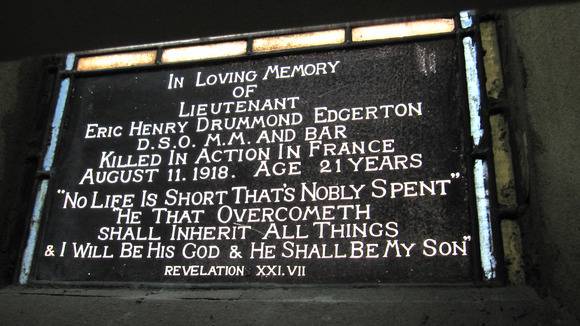St. George, Patron Saint of England, was often selected as a subject for commemorative stained glass as he embodied the courage, chivalry and fighting spirit of the soldier, as well as representing the English cause. On Sunday 15 June 1919, at a memorial service conducted by the Rev. Dr. Sugden, Master of Queen's College, the headmaster of Wesley College, Mr. LA Adamson unveiled a stained glass window in memory of Lieutenant Edgerton, a former student of Wesley. He was the son of James and Florence Edgerton of Elsternwick, who worshipped at the church.
Eric Henry Drummond Edgerton enlisted as a private on 14 April 1915. With reinforcements for the 24Battalion, and promoted to Lance-Corporal, he embarked for training in Egypt before proceeding to Gallipoli where he served with distinction at Lone Pine and was awarded the Military Medal. Proceeding to France in March 1916, he showed his abilites at Pozieres Ridge and later at Warlencourt on the Somme where he was awarded a Bar to his MM. On 8 March he was commissioned in the field. After specialist training and a short respite in Britain, he was promoted to Lieutenant before returning to his battalion in France. He played a key role in the capture of Ville-sur-Ancre and was awarded the Distinguished Service Order for 'cool intitiative, courage and brilliant leadership'. On the front line between Rainecourt and Framerville on the night of 11 August 1918, he was killed by a stray bullet while talking to his men.The 21-year oldwas first buried at Blangy-Tonville and later at Villers-Bretonneux, where he is believed to be among the most decorated of men. A photograph of the original grave marker is held in Australian War Memorial collection. On 8 November 1918 he was mentioned in dispatches.
References & Acknowledgements
AWM Roll of Honour; AWM photograph P03668.011; Argus, 17 June 1919, p.8. Walsh, G.P., "Edgerton, Eric Henry Drummond (1897-1918)', Australian Dictionary of Biography, National Centre of Biography, ANU.





